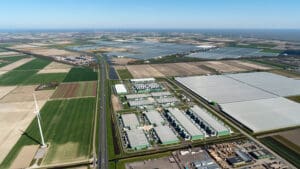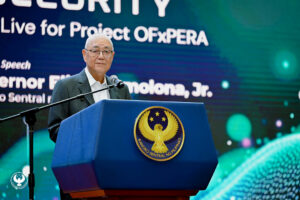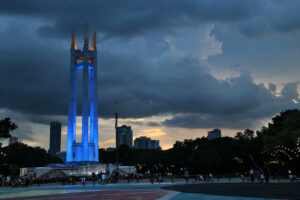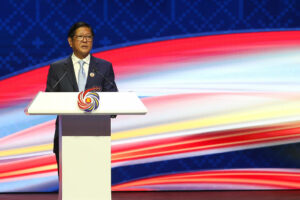THE SHARP slowdown in government spending tied to the widening flood control corruption scandal is pushing the Philippines to cut its medium-term growth goals, with the Development Budget Coordination Committee (DBCC) likely to trim its 2026 target to 5-6%, Executive Secretary and former Finance Secretary Ralph G. Recto said.
“Realistically, for next year, it will be from 5-6%. Because we’re coming from a low base,” Mr. Recto told reporters on the sidelines of a Senate hearing on Nov. 17.
“(The growth) will take some time, maybe a quarter, before we can go back to the regular growth rate,” he added.
In June, the DBCC tempered its growth forecast to 5.5-6.5% for 2025 and 6-7% for 2026-2028, mainly due to “heightened global uncertainties” arising from the Middle East conflict and US tariffs.
However, in the first nine months of the year, gross domestic product (GDP) growth only averaged 5% after the weaker-than-expected 4% growth in the third quarter, reflecting the slowdown in public spending and household consumption.
“Our fundamentals are okay. The only thing is to regain the trust and confidence of our consumers, of our businessmen, and the only way we can do that is to show accountability,” he said.
Mr. Recto, who was appointed by President Ferdinand R. Marcos, Jr. as executive secretary on Monday, also hinted that the DBCC could reset growth targets through 2030, as the economy is now expected to grow by 4.7-5.2% in 2025.
The DBCC is set to review its macroeconomic assumptions and targets at a meeting in December, he said.
For his part, Economy Secretary Arsenio M. Balisacan said the DBCC may keep its 6-7% growth target for 2026.
“I think 6% to 7% should be doable next year. But of course, that assumes that we can really address the issues that have faced us and confronted us,” he told reporters on Nov. 17.
Mr. Balisacan said he is hoping for at least 5% GDP growth in the fourth quarter, buoyed by favorable external trade.
“I would not mind our economy slowing down in one quarter, two quarters. As long as that will lead to a stronger economy in the medium term,” he said.
Meanwhile, Mr. Recto said the DBCC may have to stick to its P4.52-trillion revenue target this year, even as growth slows.
“Revenues will get affected a bit. But we’ve already taken care of that for the year. Our deficit will be on target. So, what we will miss is the growth rate, unfortunately. But moving forward, everything will be upside,” he said.
Mr. Recto said the Philippines is still on track to trim the fiscal deficit to 5.5% of GDP this year.
“We’re on target. Whatever our deficit goal is for the year, including debt, we are not borrowing beyond that,” he said.
CORRUPTION COSTThe Philippine growth outlook is now being clouded by a corruption scandal involving government officials and lawmakers who have allegedly colluded with private contractors to receive billions of kickbacks from projects.
According to the Department of Finance (DoF), the economic impact of corruption related to the Department of Public Works and Highways (DPWH) flood control projects could have reached between P145.4 billion and P407 billion from 2023 to 2025. This assumes that between 25% and 70% of the DPWH project costs were lost to corruption.
“Given the lower GDP with corruption, there is a foregone employment ranging from 327,000 to 914,000 jobs, for the same period,” the DoF said.
“On average, GDP could have been P48.4 [billion] to P135.7 billion higher every year while generating 95,000 to 266,000 additional jobs annually from 2023 to 2025 if the flood control budget had been properly and fully implemented and utilized (i.e., no corruption),” the DoF said. — Aubrey Rose A. Inosante

















